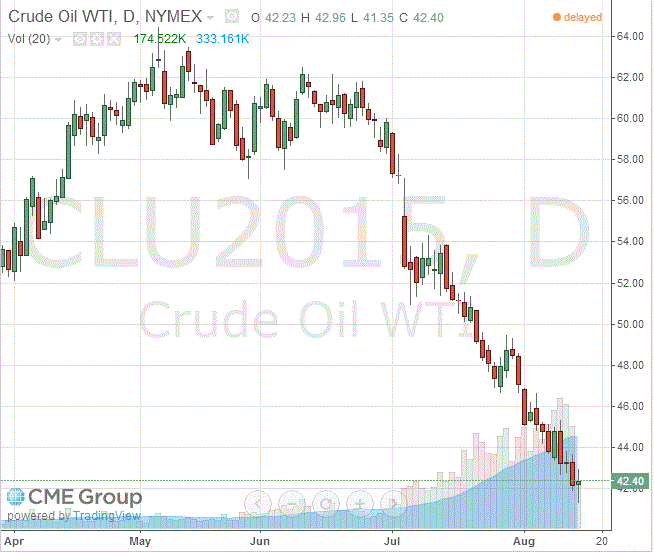- Oil prices traded mixed on a stronger U.S. dollar and on concerns over the global oil glut
Noticias del mercado
Oil prices traded mixed on a stronger U.S. dollar and on concerns over the global oil glut
Oil prices traded mixed on a stronger U.S. dollar and on concerns over the global oil glut. The U.S. dollar rose against other currencies after the release of the U.S. economic data. The U.S. producer price index increased 0.2% in July, exceeding expectations for a 0.1% gain, after a 0.4% rise in June.
On a yearly basis, the producer price index decreased 0.8% in July, beating forecasts of a 0.9% decline, after a 0.7% fall in June.
The rise was partly driven by higher services prices, which were up 0.4%.
The producer price index excluding food and energy climbed 0.3% in July, exceeding expectations for a 0.1% gain, after a 0.3% increase in June.
On a yearly basis, the producer price index excluding food and energy climbed 0.6% in July, beating forecasts of a 0.5% increase, after a 0.8% rise in June.
The U.S. industrial production rose 0.6% in July, exceeding expectations for a 0.3% increase, after a 0.1% gain in June. June's figure was revised down from a 0.2% rise.
The increase was driven by higher factory output. Factory output climbed by 0.8% in July.
Mining output climbed 0.2% in July, while utilities production declined 1.0%.
Capacity utilisation rate increased to 78.8% in July from 77.7% in June, in line with expectations. June's figure was revised down 77.8%.
A slowdown in China's economy and high oil production also weighed on oil prices.
WTI crude oil for September delivery increased to $42.40 a barrel on the New York Mercantile Exchange.
Brent crude oil for September decreased to $49.00 a barrel on ICE Futures Europe.
